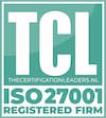Sjors Martens, Commercial Director at Eco-Movement, outlines to Mobility Portal Europe how their data on EV charging stations can assist operators in optimizing their offerings and customer experiences. Below, all the details.
“Remain competitive, adapt to evolving trends, and make informed business decisions” are some of the advantages that charging point operators (CPOs) gain with Eco-Movement.
Sjors Martens, Eco-Movement
This is assert by Sjors Martens, Commercial Director of the Dutch company, to Mobility Portal Europe.
As a leading provider of data on charging stations for electric vehicles, the platform offers high-quality information, global coverage, and real-time updates.
But, how does this optimize the competitiveness of CPOs?
Being part of this comprehensive database increases the visibility of charging stations, attracting more users.
Operators can use this information to assess the current location of points, tariffs, and insights, aiming to identify coverage gaps and successfully expand and optimize infrastructure.
Currently, the Netherlands is one of the leading countries in the transition to electric mobility, partly due to the numerous incentives offered.
According to official figures from the RAI, BOVAG, and RDC Association, 369,791 new cars were registered in 2023, surpassing the forecast of 340,000 units.
This growth was accompanied by over 500,000 charging points, including 442,000 domestic, 140,000 semi-public, and 4,500 fast semi-public, according to NAL.
With knowledge of these data, CPOs can strategically plan and optimize their charging network, identifying high-demand areas and potential expansion opportunities.
This benefits not only the operators but also users who gain access to accurate and up-to-date information, making it 100 per cent reliable.
“At Eco-Movement, we closely monitor regulatory developments across Europe and have created a service that helps CPOs report on their charging stations to National Access Points (NAPs),” explains Martens.
Therefore, one of the company’s goals for this year is the integration and support of NAPs as required by European regulation.
How? By ongoing discussions with various government levels to actively support and assist in their implementation.
It is worth noting that some of the companies and institutions that rely on their services include Google Maps, Apple Maps, Tesla, TomTom, ABetterRouteplanner, HERE, and the European Commission’s EAFO portal.

Another goal is added to this.
Electric cars are not the only focus of the European eMobility agenda, the decarbonization of heavy transport is also crucial.
Hence, in 2023, the Alternative Fuels Infrastructure Regulation (AFIR) was approved as part of the Fit for 55 package.
The regulation broadly mandates the installation of charging stations for heavy vehicles with a minimum power of 350 kilowatts every 60 kilometers along the main network of the RTE-T.
Additionally, every 100 km on the comprehensive RTE-T network from 2025, with complete coverage by 2030.
CPOs must provide consumers with comprehensive information through electronic means about availability, waiting times, and prices at different stations.
And here is where Eco-Movement aspires to contribute.
Recognizing the importance of charging for heavy trucks, the platform directs its efforts towards collecting and providing specific data about charging stations suitable for these vehicles.
Currently, the Netherlands and Germany are the main drivers of electrification growth in the EU, representing 65 per cent of sales.
According to the European Automobile Manufacturers’ Association (ACEA), registrations of eTrucks in the Dutch country increased by 1,463.6 per cent.
However, Eco-Movement’s focus extends beyond the Netherlands and even Europe, with a global approach encompassing America, Oceania, and increasingly the Middle East and Asia.
Specifically, its database features 899,007 connectors distributed across 73 countries.
“Our mission is to create a full global dataset of charging stations, covering all regions worldwide” Martens explains.
How does this work? By collaborating with navigation companies and app developers to create reliable and easy navigation to charging stations fueled by their data services.
This increases the visibility of charging stations, enhancing the experience for end-users of electric vehicles.
In this way, the company seeks to provide “comprehensive and accurate information”, fostering the global adoption of electric vehicles.






